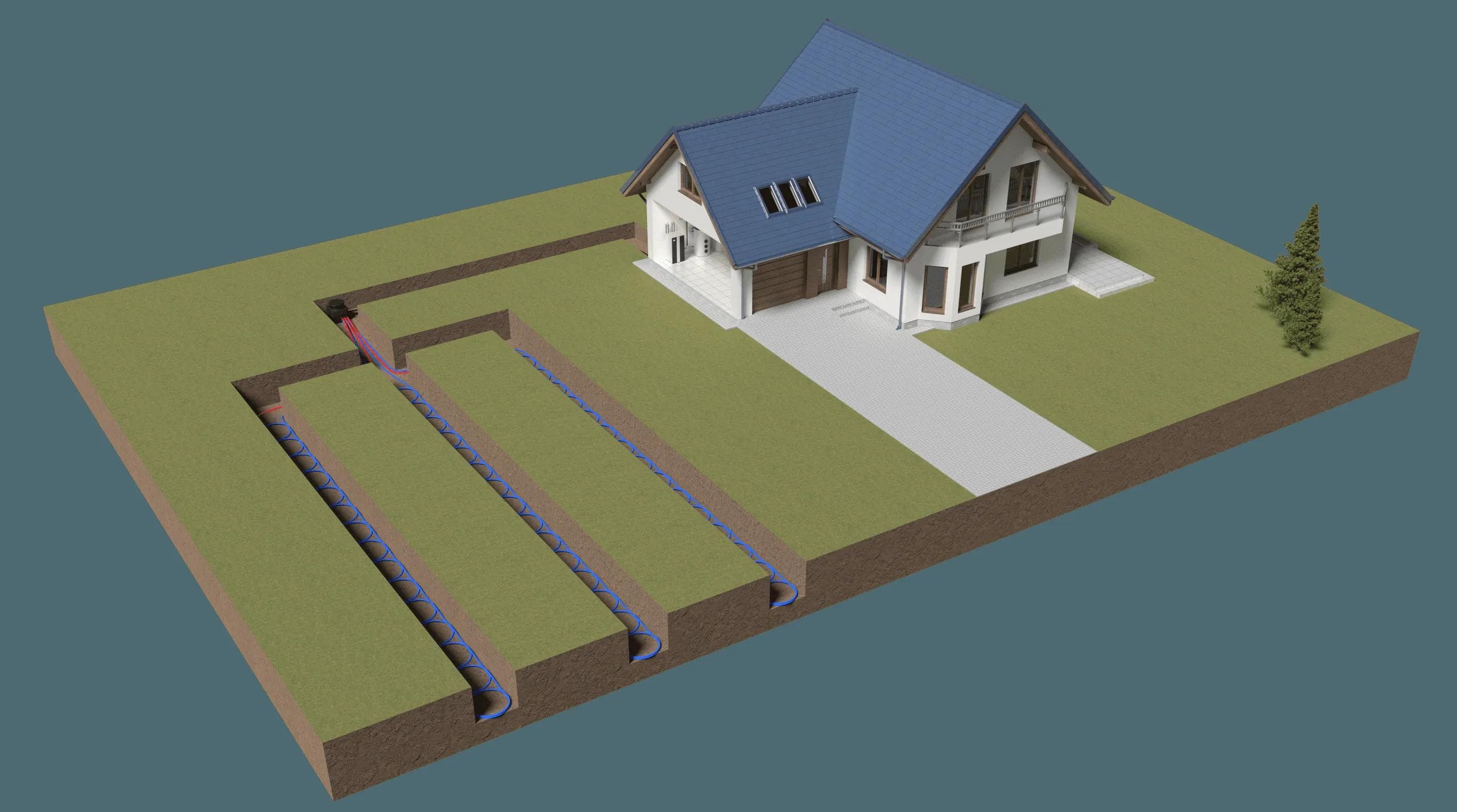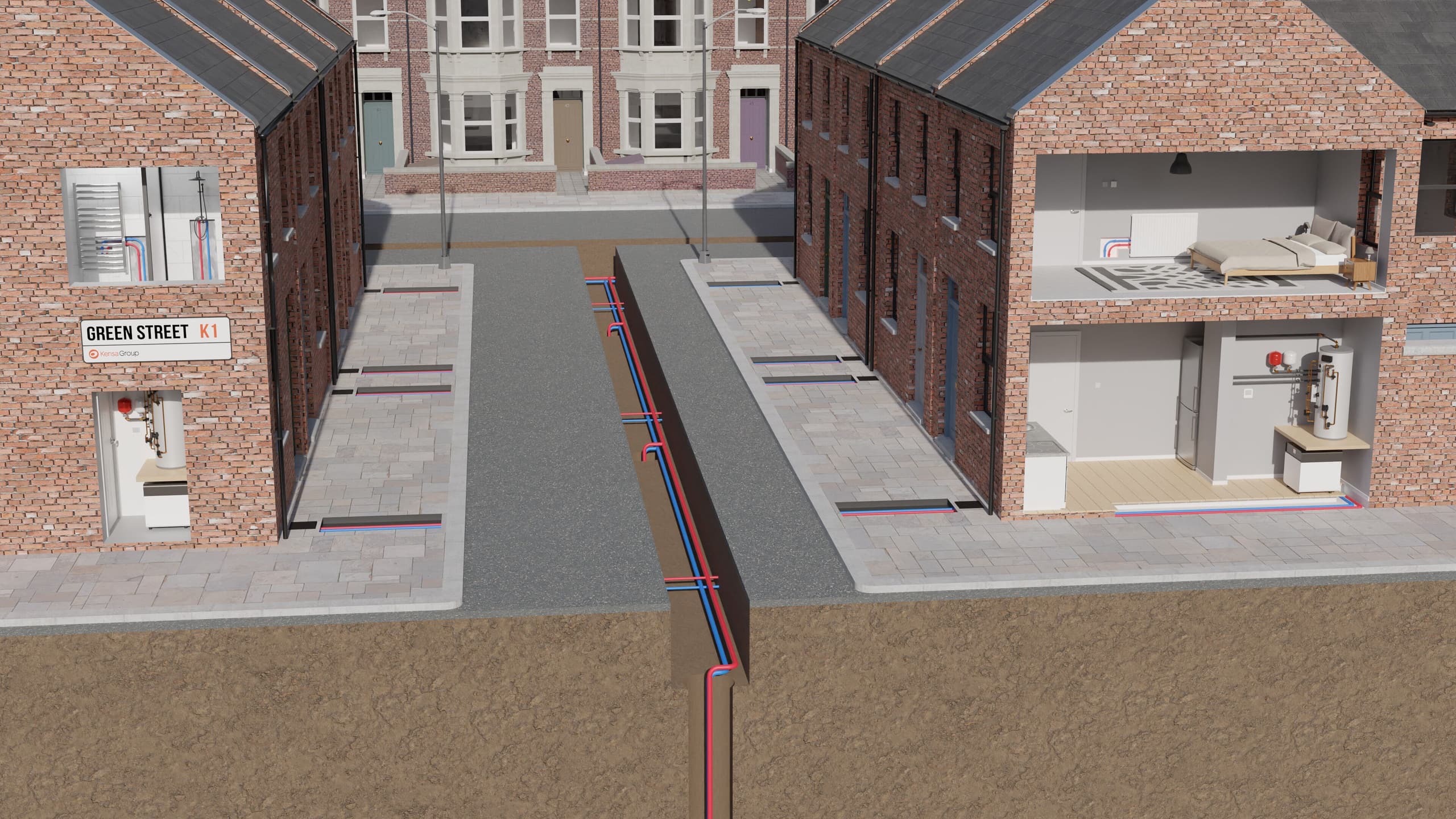Bristol City Council: Ashton Rise
- LocationBristol
- Completion DateFeb 2023
Bristol City Council were the first UK council to declare a climate emergency in 2018 and the city set ambitious targets of being carbon neutral by 2030. The properties were built to be as environmentally friendly as possible to help Bristol achieve its carbon-neutral pledge.
Low carbon Kensa  ShoeboxProductShoebox ground source heat pumps were installed as the heating and hot water system alongside modern construction methods such as the Sig iHouse solution and the use of lightweight Fusion Steel.
ShoeboxProductShoebox ground source heat pumps were installed as the heating and hot water system alongside modern construction methods such as the Sig iHouse solution and the use of lightweight Fusion Steel.
The  What is a Ground Source Heat Pump?Ground Source Heat Pumpsground source heat pumps utilise natural heat energy extracted via boreholes and connected through a Shared Ground Loop Array. This configuration is known as
What is a Ground Source Heat Pump?Ground Source Heat Pumpsground source heat pumps utilise natural heat energy extracted via boreholes and connected through a Shared Ground Loop Array. This configuration is known as  Networked Heat PumpsA decarbonisation solution for over 60% of UK homesNetworked Heat Pumps – an alternative form of sustainable district heating which replicates the gas grid. Within the development 16 shared ground loop arrays with between 2 – 4 boreholes per array were drilled on-site to a depth of 177m.
Networked Heat PumpsA decarbonisation solution for over 60% of UK homesNetworked Heat Pumps – an alternative form of sustainable district heating which replicates the gas grid. Within the development 16 shared ground loop arrays with between 2 – 4 boreholes per array were drilled on-site to a depth of 177m.
By installing individual Shoebox ground source heat pumps connected to a shared ground loop array into each home, the separate dwellings have complete control over their heating and hot water.
Residents will enjoy reliable, efficient and sustainable heating and hot water year-round. They will also be able to choose their own energy supplier giving the residents complete control over their energy bills.
Ground source heat pumps have very low maintenance costs compared to gas boilers and air source heat pumps, so residents will enjoy low ownership costs.
Every home will see lifetime carbon savings of 30 tonnes compared to individual gas boilers. They will also remove all NOx emissions ensuring that their heating system does not impact the air quality in the development. Air quality in cities such as Bristol is a concern, so this development will not contribute to air pollution.
Alisdair Donn, Head of Building Performance and Group Sustainability at Willmott Dixon commented:
In terms of programme impacts, there really was no programme impact. So, that groundworks phase … was carried out in parallel with the other ground works going on the foundations and floor slabs and the rest of it.
So, it’s a parallel track, there’s no critical path element that added additional programme, in terms of the shared array ground source solution. There was some additional pre-construction time, in relation to the evaluation of options, but that was part of the normal getting to site pre-construction activities, but in terms of site activities, none.
David Broom, New Build Framework Director at Kensa, comments:
This project of 133 homes is a prime example of how networked heat pumps can work at scale for new build developments. The ground source heat pumps connected to shared ground loop arrays will reduce carbon emissions now, but also ensure these homes are on a path to Zero Carbon as the electric grid decarbonises.
With fossil fuel heating systems being ruled out from new-builds from 2025, Bristol City Council’s commitment to a lower carbon alternative ahead of the deadline should be viewed as the new benchmark. Bristol’s plans for net-zero carbon by 2030 are ambitious, yet by adopting the low-carbon and low-cost approach used at Ashton Rise, we wholly expect Bristol to make huge strides to achieve its objective.
Neal Stephens, Managing Director for Willmott Dixon South West said:
This scheme has been designed to help Ashton Rise become a sustainable housing development. By showcasing innovative solutions to carbon waste reduction, we hope to inspire other developers to consider their own carbon footprint and the effect it has on the city. We feel deeply rooted in Bristol, and hope that these innovative developments will not only support the local community, but the local environment too.
Ashton Rise, Bristol, is a large sustainable housing development that provides much-needed housing options for local residents. The modern methods of construction alongside the use of ground source heat pumps make this project a model for future housing developments in the city and country.
Craig Jefferies from Gregor Heating comments:
We were one of the first installers in the South West region to embrace renewable heating technologies, and are currently installing over 1000 heat pumps into new build properties in the region.
However, it was our first time working with Kensa and being involved in a project using shared ground loop arrays. It was an amazing experience which ran smoothly thanks to all the work done in advance by Kensa Contracting and Willmott Dixon. Working on this project has already started to open a lot of doors for the business going forward.